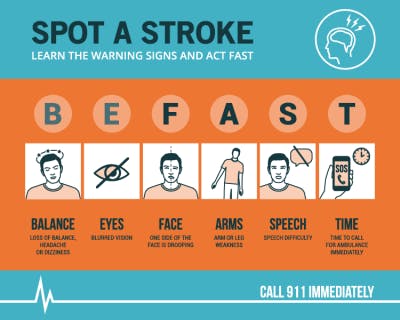

What we’ve learned, though, from more modern imaging techniques like MRI - which is sensitive to the earliest signs of a stroke - is that even people who have very brief spells, can have evidence of permanent damage to the brain about half the time. With a full-blown stroke, the decrease in blood flow goes on for a longer period of time. The person might have a drooping face and weakness of the arm on the same side of the body, but those symptoms will often last only 5 to 10 minutes, go away and the person will look and feel completely normal. With a TIA, the symptoms are usually short-lived. What’s the difference between a TIA and a full-blown stroke? This means there is a temporary cessation of blood flow causing dysfunction of the brain, but the blood flow is restored before there’s permanent damage to the brain.

A TIA is like a stroke that stopped before any permanent damage was done. TIA stands for transient ischemic attack, sometimes known as a “mini-stroke.” Most strokes are due to a blockage in a blood vessel that leads to an injury in the brain.

Koyfman, who is also an assistant professor of clinical neurology at Weill Cornell Medicine, about how to spot the warning signs of a TIA, what to do after someone suffers one, and ways to reduce the risk of having a stroke. “The best way to prevent future strokes is if a person acts quickly so we can determine and treat the underlying cause.”Īhead of World Stroke Day, Health Matters spoke with Dr. “People might minimize the event because a ‘mini-stroke’ often resolves quickly, but it’s still an emergency that needs to be evaluated,” he says. In fact, five people out of a 100 who have had a TIA will have a stroke within just two days. However, he notes that the greatest risk is in the first 48 hours to seven days after a TIA. Once you’ve had a TIA, there’s a 10 percent chance you’ll suffer a full-blown stroke within the next three months, says Dr.

Feliks Koyfman, a neurologist and director of stroke services at NewYork-Presbyterian Queens. Ignoring these symptoms could have serious consequences, says Dr. Yet, only 3 percent sought medical care, according to a 2017 study from the American Heart Association. Approximately one in three American adults has experienced a symptom consistent with a “mini-stroke,” sometimes called a transient ischemic attack (TIA).


 0 kommentar(er)
0 kommentar(er)
